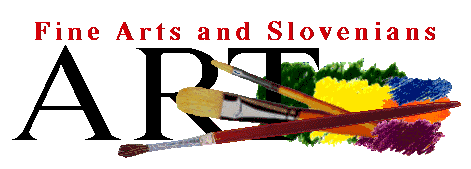
![]()

![]()
It was encouraging for Klemencic to receive the first favourable report on his work, but later on, critics did mostly not write in his favour, or he was just at the margin of their interest. It might also be the reason vhy so little has been written down about Klemencic the man, about his family, the crucual events in his life, and the necessity to paint to make his living. It seems as if Klemencic had been completely absorbed by painting; as if painting had been his life. Indeed, very little is known about his private life.
|
|
F. Klemencic: Self-portrait, oil on wood (1938) His contemporaries describe him as a quiet, serious, kind-hearted honest man, who could also be spirited when in a company of friends; otherwise, he lived a quiet and simple life, not at all bohemian. In view of such personality traits, it is clear why he never pushed himself to come to the fore or scrambled for success and respectable posts in artist's societies, but rather stayed unnoticed at the back. Prior to World War I. Klemencic became familiar with the painting of Vienna and Munich and also with other European art which he could see at exhibitions and in art magazines ... After his return from Munich, Klemencic had to face the reality of domestic environment ... |
|
|
Fran Klemencic: Roses, oil on wood |
|
|
|
. . Flowers - roses, tulips, sunflowers, etc. - became Klemencic's predominant motif, and he clung to it for the rest of his creative life . . .
Due to severe illness, the painter withdrew to Old People's Home at Bokalce (by Ljubljana) in 1959, and he died there on November 3, 1961. |
||
 Fran Klemencic:
At River, oil on canvas
(1924)
Fran Klemencic:
At River, oil on canvas
(1924)
The painter Fran Klemencic can be ranked among the artists who prolonged the late 19th century realism into the 20th century. His programme included portraits painted after living models, while in the case of landscapes it was often only sketches that he made outdoors, and they served him later in his studio as an aid while he was executing a large-scale oil painting. Even in his genre motifs he did not depend solely on models . . .
Fragments from the essay by Polonca Vrhunc (translated by Branka Klemenc)
National Gallery, Ljubljana 1993